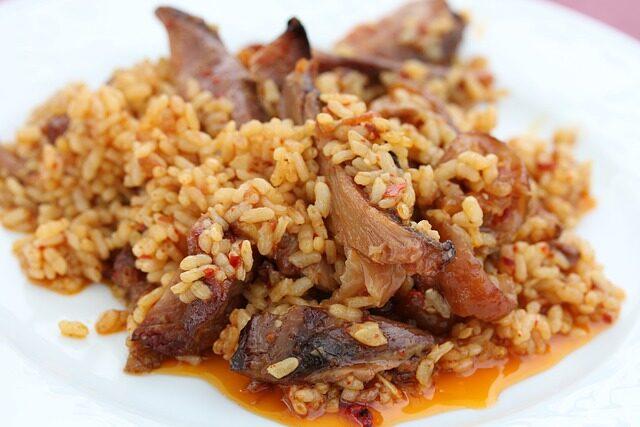¡Compra todo lo que necesites y recíbelo hoy mismo en: Amazon!
Esta entrada también está disponible en: Español (Spanish)
Spanish cuisine is a veritable feast of flavors and traditions, with each region contributing its uniqueness and richness. In this article, we will explore the flavors of Spain: a journey through its different culinary traditions, highlighting emblematic dishes and the cultural influence that has shaped this delicious gastronomy.
- What are the emblematic dishes of Spanish cuisine?
- What are the key ingredients in Spanish gastronomy?
- How do cultures influence the flavors of Spain?
- Where can I find the best local dishes?
- Why is tapas culture important in Spain?
- Which Spanish regions have the richest culinary traditions?
- Frequently asked questions about the flavors of Spanish cuisine
What are the emblematic dishes of Spanish cuisine?
Spanish gastronomy is characterized by its diversity and richness, with outstanding traditional Spanish dishes that vary according to the region. One of the best known is paella, originally from Valencia, which combines rice with seafood, meat and vegetables, creating an explosion of flavors.
Another emblematic dish is gazpacho, a cold tomato soup that is especially enjoyed on hot summer days. This Andalusian dish is a perfect example of how fresh ingredients can enhance flavor.
In addition, we cannot forget the Iberian ham, a delicacy that is considered a symbol of Spanish gastronomic culture. Its curing in the pastures of Extremadura and Andalusia gives it an unmistakable flavor.
- Paella
- Gazpacho
- Iberian ham
- Churros con chocolate
What are the key ingredients in Spanish gastronomy?
Spanish cuisine is based on fresh, high quality ingredients. Among the essential ingredients of Spanish cuisine, extra virgin olive oil stands out for its versatility and health benefits.

Saffron, known as "red gold", is another key ingredient that brings a unique color and flavor to dishes such as paella. Its use reflects the cultural heritage that has influenced Spanish gastronomy over the centuries.
In addition, paprika de la Vera is a condiment used in numerous recipes, adding a smoky touch that enhances the flavor of the dishes. These ingredients are just a sample of the richness that Spanish cuisine has to offer.
- Extra virgin olive oil
- Saffron
- Paprika from La Vera
- Fresh tomatoes
How do cultures influence the flavors of Spain?
Spain's history is marked by a series of cultural influences that have shaped its cuisine. Roman and Arab cultures, for example, have left a deep imprint on Spanish cuisine.
The Romans introduced techniques for growing and preserving food, while the Arabs brought spices, fruits and cooking methods that are still used today. This fusion of traditions has given rise to a gastronomic diversity that is a reflection of the country's history.
The typical recipes of each Spanish region are a clear example of this cultural heritage, where local ingredients and culinary traditions intertwine, creating a rich tapestry of flavors that is celebrated around the world.

Where can I find the best local dishes?
To enjoy typical Spanish dishes, local markets and taverns are the best places. In cities like Madrid, Seville and Granada, tapas are a fundamental part of the gastronomic experience, where you can taste a variety of dishes in one place.
In the region of Valencia, it is essential to try the authentic paella in a traditional restaurant that respects the original recipe. Likewise, in San Sebastian, you can enjoy pintxos, a Basque version of tapas, which surprises with its creativity and flavor.
- Local markets
- Traditional taverns
- Regional restaurants
- Gastronomic fairs
Why is tapas culture important in Spain?
Tapas culture is one of the most emblematic characteristics of Spanish gastronomy. Tapas encourage socializing and are a way to enjoy food in a casual and shared way. In many cities, it is common to go out for tapas with friends.
This style of eating allows you to try a variety of flavors and dishes in a single outing, which enriches the dining experience. In addition, tapas are usually prepared with fresh and seasonal ingredients, thus highlighting the importance of regional diversity.
The tapas culture is not only a culinary tradition, but also a way of life that reflects the open and welcoming spirit of the Spanish people.

Which Spanish regions have the richest culinary traditions?
Spain is a country of regions, and each offers a unique culinary heritage. In the north, Basque gastronomy is famous for its pintxos, while Galician cuisine is renowned for its seafood and meat dishes.
In the center, Madrid stands out for its cocido madrileño, a stew that reflects the tradition and flavor of the capital. On the other hand, Andalusia is famous for its gazpacho and varied tapas, which celebrate the freshness of its ingredients.
Finally, in the Valencian Community, paella is the signature dish, while in Catalonia you will find dishes such as pan con tomate and crema catalana. Each region brings its own distinctive touch, creating a mosaic of flavors that enriches Spanish gastronomy.
Frequently asked questions about the flavors of Spanish cuisine
What foods are traditional in Spain?
Traditional foods in Spain vary from one region to another. Some examples are paella from Valencia, cocido madrileño, bacalao al pil pil from the Basque Country and jamón ibérico from Andalusia. Each dish reflects the local ingredients and culture of its region, showing the gastronomic diversity of the country.
In addition, tapas, which include a variety of appetizers served in small portions, are an essential part of Spanish culinary culture. These can be found in almost any bar or restaurant, offering an opportunity to sample different flavors in a single visit.

What is the flavor profile of Spanish cuisine?
The flavor profile of Spanish cuisine is varied and rich, often characterized by the use of spices such as paprika and saffron. The combination of fresh ingredients, high quality oils and traditional cooking methods results in dishes full of flavor and aroma.
Flavors can range from the sweetness of roasted peppers to the smokiness of paprika. The diversity of ingredients, including seafood, meats, vegetables and legumes, further enriches this culinary experience.
What is the gastronomic culture like in Spain?
The food culture in Spain is vibrant and diverse. Food is a central part of social life, where meals are shared with family and friends. Celebrations and festivities are often accompanied by typical dishes, reinforcing the cultural bond.
Tapas are a great example of this, as they encourage socializing and exploring flavors. In addition, gastronomic fairs and local markets are key points to enjoy traditional food and experience local culture.
What is the national dish of Spain?
While there is no official dish that is considered the "national dish of Spain", paella is one of the strongest contenders. Originating in the Valencian Community, this dish combines rice with different ingredients, such as seafood, meat and vegetables, and reflects the richness of Spanish gastronomy.

However, other dishes, such as gazpacho and Iberian ham, are also widely recognized and loved both nationally and internationally. Each region has its own "national dish", underlining the diversity of flavors in Spain.
Si quieres conocer otros artículos parecidos a The flavors of Spain: a tour of its culinary traditions puedes visitar la categoría Blog.


Leave a Reply